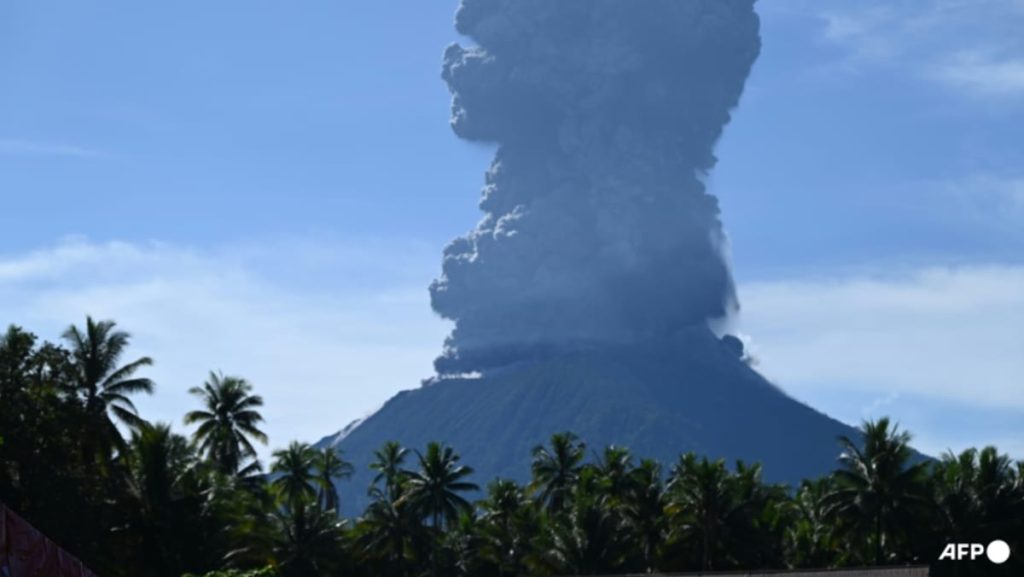The Ibu volcano in Indonesia erupted on Saturday, spewing lava, ash, and causing lightning. The alert level was raised to the second-highest tier last week, with an exclusion zone of two to three miles around the crater. Ibu is one of Indonesia’s most active volcanoes, with over 21,000 eruptions recorded last year. Geology Agency official Sofyan Primulyana stated that Ibu had an average of 58 eruptions per day in 2023, indicating high levels of activity.
Indonesia, located on the Pacific “Ring of Fire,” is prone to frequent seismic and volcanic events. Mount Ruang in North Sulawesi province erupted multiple times last month, leading to the evacuation of thousands of residents. The volcano remains at the highest alert level, prompting authorities to plan for the permanent relocation of all 800 residents of Ruang island. The volcanic activity in the region underscores the ongoing challenges faced by Indonesian communities living in close proximity to active volcanoes.
The eruption of Ibu volcano has generated significant concern among authorities and residents alike. The volcanic activity, which included lava flows, ash emissions, and lightning, resulted in the raising of the alert level to the second-highest tier. The exclusion zone established around the volcano’s crater serves to protect nearby communities from potential hazards. These safety measures, informed by the past history of volcanic eruptions in the region, aim to minimize the impact of the ongoing volcanic activity on local residents.
The high frequency of eruptions at Ibu volcano in recent years highlights its status as one of Indonesia’s most active volcanoes. With an average of 58 eruptions per day recorded in 2023, Ibu’s volcanic activity poses a constant threat to surrounding areas. Geology Agency official Sofyan Primulyana’s assessment of the situation underscores the continuous monitoring and assessment efforts undertaken by Indonesian authorities. The proactive measures taken in response to the ongoing volcanic activity demonstrate a commitment to safeguarding communities at risk.
Indonesia’s location on the Pacific “Ring of Fire” subjects it to frequent seismic and volcanic events, necessitating heightened preparedness and response capabilities. The eruption of Mount Ruang in North Sulawesi province, in addition to the ongoing activity at Ibu volcano, exemplifies the country’s vulnerability to natural disasters. The evacuation of thousands of residents and plans for the permanent relocation of Ruang island’s inhabitants serve as a poignant reminder of the human toll exacted by these events. The Indonesian government’s focus on disaster risk reduction and community resilience is crucial in light of the persistent threat posed by volcanic eruptions.
As Indonesian authorities continue to monitor and respond to volcanic activity across the archipelago, the need for sustained vigilance remains paramount. The eruption of Ibu volcano, coupled with the ongoing situation at Mount Ruang, underscores the inherent risks faced by communities living in volcanic regions. The proactive measures implemented by authorities, including alert systems, exclusion zones, and evacuation plans, reflect a commitment to protecting lives and property in the face of natural disasters. The resilience and adaptability of Indonesian communities in the face of these challenges are striking, serving as a testament to the human capacity to persevere in the midst of adversity.















